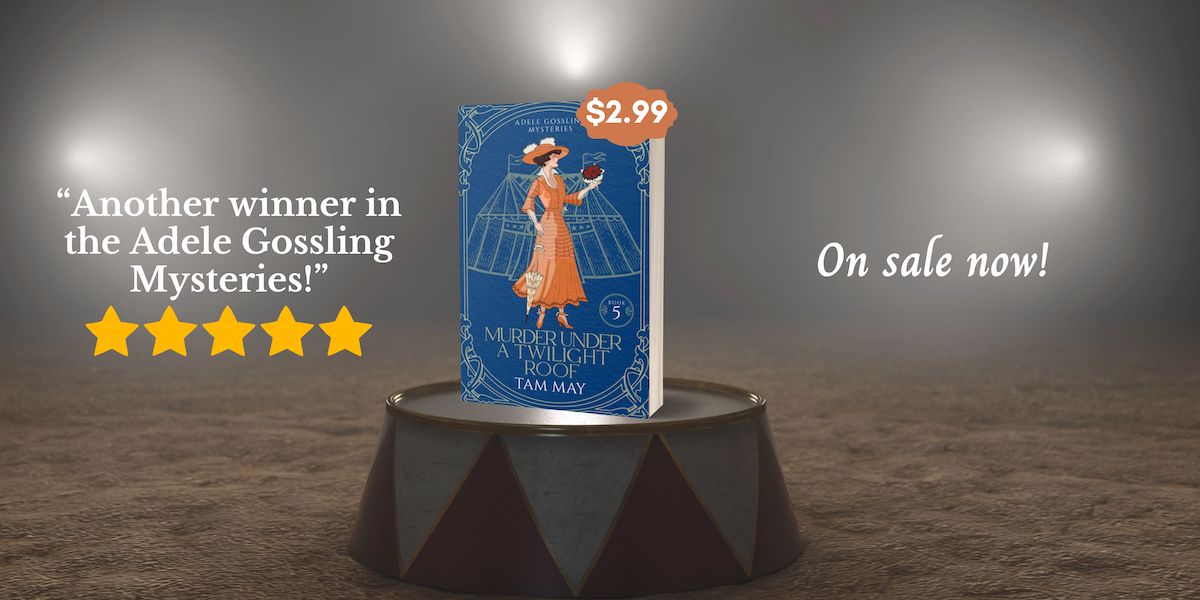When doing some research recently, I discovered that today is the day summer officially ends and fall begins.
This summer hasn’t been easy for many of us. I recently moved from Texas to Ohio and it looks like I might have chosen a good time to leave, as many of my Texas friends experienced higher-than-usual temperatures this summer (I’m taking 105 and 106-degree type weather). Even in the Midwest, people told me it was an unusually hot and humid summer for our town. One of my neighbors posted the following sign on her lawn, maybe in an effort to encourage the colder weather to come:

A few weeks later she took it down. I guess she got discouraged by the continuing high temperatures!
In the 19th and early 20th centuries, when there were no A/C units, no cooling systems, and fans that were inadequate, summer was the time for people to get away. Remember my blog post about Grace Brown and Chester Gillette (which you can find here)? Gillette lured his victim to the Adirondacks with the promise of a honeymoon vacation. The Adirondacks was a popular resort town in the East in the early 20th century.
Both Brown and Gilette were working-class people, and at the turn of the century, resorts such as the Adirondacks were just becoming accessible to them. But for the very wealthy, such resorts had been at their disposal since the 19th century. There were even those who made hopping from resort to resort a way of life.

Photo Credit: The Beach and The Sea, Blankenberghe, Belgium, from “Views of Architecture and Other Sites in Belgium” catalog, 1905, Detroit Publishing Company: Fae/Wikimedia Commons/PD Art (PD old 100)
Resort life for the wealthy, as Charles Dudley Warner depicts in his book Their Pilgrimage (1884), was relaxing, exciting, and, oftentimes, boring. Some traveled for their health to places such as Palm Springs in California. Others traveled in the winter to get away from the harsh weather in their hometown. And many did it because it was “the thing to do” among the wealthy.
The idea of seeing and being seen was prevalent throughout the late 19th and early 20th centuries, and resort life offered just the place for this. What people did or what they saw in terms of the local attractions was less important than who they met and mingled with. At the same time, the anonymity of resort life gave the tightly-laced blue bloods of this time freedom to be themselves, a luxury they couldn’t afford at home. Away from the resorts, the wealthy had to watch what they said and did so as not to be shunned by their neighbors or get their names in the papers. But at a hotel, no one knew them, and they could loosen their grip a little bit.
Resort life was predominantly for women, though there were men and children as well. The hard-working, aggressively competitive Gilded Age and Progressive Era man couldn’t take time off for vacations. Ironically, women found a level of release and independence in the resort hotels that they couldn’t have at home, with the rigid boundaries of the separate spheres.
Those who have read my Waxwood Series know the way of life of resort towns well. The Alderdice family aren’t exactly the kind of Gilded Age travelers that Warner’s novel depicts, as their lives are firmly rooted in San Francisco society. But, like their blue blood companions, they take full advantage of the extravagances offered once they do arrive and, in more ways than one, they become different people immersed in resort life for even just that short a time.
You can read about the Alderdices’ experience of resort life in Book 2 of my series, False Fathers. Book 3, Pathfinding Women, coming out this summer, also gives you a sense of resort life in the last year of the 19th century. If you want to find out more about the Waxwood Series, you can check out this page.
The Adele Gossling Mysteries is grounded more in the grim realities of murder and crime, but I’m not quite done with resort life yet in my books. I already have on my agenda to write a book for this series set in a resort town which will include all of its fascinating psychological aspects amid a backdrop of crime and mayhem.
In the meantime, you can pick up The Carnation Murder, the first book of the series, for free from all book vendors. All the information and links are here. And if you’re interested in a more dramatic look at resort life, you’ll find my Waxwood Series right up your alley. You can start with Book 1, The Specter, which is free on all vendors, here.
If you love fun, engaging mysteries set in the past, you’ll enjoy The Missing Ruby Necklace! It’s available exclusively to newsletter subscribers here. By signing up, you’ll also get news about upcoming releases, fun facts about women’s history, classic true-crime tidbits, and more!





